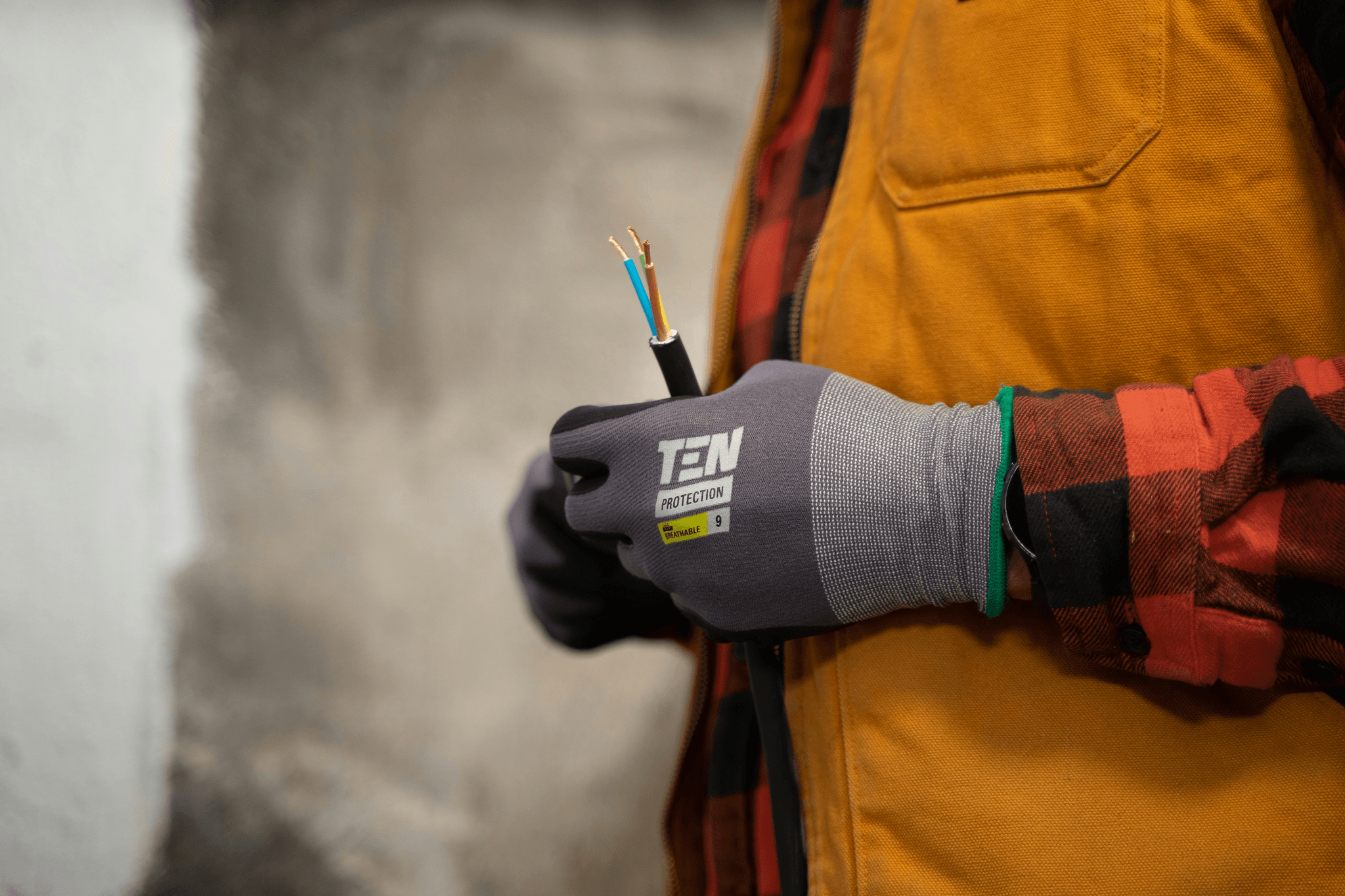Introduction

Plastic has long been associated with insulation and non-conductivity, but is plastic a conductor of electricity? This common misconception has led many to overlook the true potential of plastic in electrical applications. In this guide, we'll explore the truth about plastic and conductivity, debunking myths and uncovering the real story behind plastic's electrical properties.
Common Misconceptions about Plastic and Electricity
For years, the prevailing belief has been that plastic is always an insulator, incapable of conducting electricity. This misconception has led to missed opportunities for utilizing plastic in various electrical devices and applications. However, recent advancements have challenged this notion, revealing the surprising conductive properties of certain types of plastic.
Exploring the Truth about Plastic and Conductivity
In reality, not all plastics are created equal when it comes to electrical conductivity. Some plastics exhibit varying degrees of conductivity, making them suitable for specific electrical applications. By understanding these distinctions, we can harness the unique properties of conductive plastics in innovative ways that were previously overlooked.
The Real Story behind Plastic and Electrical Conductivity
The truth is that plastic can indeed be a conductor of electricity under certain conditions. Factors such as composition, additives, and processing methods play a crucial role in determining a plastic's conductive properties. By diving into the science behind these factors, we can gain a deeper understanding of how to leverage conductive plastics effectively in electrical engineering.
Understanding Electrical Conductivity

When it comes to understanding electrical conductivity, it's essential to grasp what makes a material a conductor of electricity. Conductive materials allow the flow of electric current due to the presence of free electrons that can move easily within the material. These materials have a high electron mobility, allowing them to conduct electricity efficiently.
What Makes a Material a Conductor of Electricity?
Metals are excellent conductors of electricity because their atoms have loosely held electrons in their outer shells, creating a sea of free electrons that can move easily through the material when a voltage is applied. This movement of electrons allows for the flow of electric current, making metals such as copper and aluminum ideal for electrical wiring and components.
The Role of Electrons in Electrical Conductivity
The role of electrons in electrical conductivity cannot be overstated. In conductive materials, such as metals, these free electrons are able to move under the influence of an electric field, carrying charge and enabling the transfer of energy. This movement is what allows for the transmission and use of electrical power in various applications.
Factors Affecting Electrical Conductivity in Materials
Several factors can affect the electrical conductivity of materials, including temperature, impurities, and crystal structure. For example, higher temperatures can increase the resistance in some conductive materials, reducing their ability to effectively conduct electricity. Additionally, impurities or defects in the crystal lattice can hinder electron movement and decrease conductivity.
By understanding what makes a material a conductor of electricity and recognizing the crucial role that electrons play in this process, individuals can gain valuable insights into how different materials interact with electrical currents and how they can be utilized effectively in various applications related to electricity.
Stay tuned for more insights on debunking myths about plastic's conductivity!
Debunking the Myths about Plastic

Addressing the Myth: Plastic Is Always an Insulator
Many people believe that plastic is always an insulator, but this is not entirely true. While some types of plastic are indeed insulators, there are also conductive plastics that can allow the flow of electricity. It's important to understand the different properties of various types of plastic and how they can affect electrical conductivity in different applications.
Investigating the Conductive Properties of Different Types of Plastic
To truly understand whether plastic can be a conductor of electricity, we need to explore the conductive properties of different types of plastic. Some plastics have inherently conductive properties due to their chemical composition, while others may become conductive through the addition of certain fillers or additives. By examining these properties, we can gain a better understanding of how and why some plastics can conduct electricity.
Examining the Impact of Additives on Plastic's Conductivity
The addition of certain fillers or additives to plastic can significantly impact its conductivity. For example, carbon-based additives such as carbon black or carbon fibers can enhance a plastic's ability to conduct electricity. Understanding how these additives work and their effects on plastic's conductivity is crucial for debunking the myth that all plastics are insulators.
Real-world Applications of Conductive Plastic

As the demand for smaller, lighter, and more efficient electronic devices continues to grow, the use of conductive plastic in electronic applications has become increasingly prevalent. One of the most common uses of conductive plastic is in printed circuit boards (PCBs), where it is used as a substrate material to provide electrical insulation while also offering the necessary conductivity for the flow of electrical currents. This unique combination of properties makes conductive plastic an ideal material for use in a wide range of electronic devices, from smartphones and tablets to medical devices and automotive electronics.
How Conductive Plastic Is Used in Electronic Devices
In addition to its use in PCBs, conductive plastic is also employed in various other components within electronic devices. For example, it is often used as a coating material for connectors and switches due to its ability to provide both electrical conductivity and protection against environmental factors such as moisture and corrosion. Furthermore, conductive plastic can be molded into complex shapes, making it suitable for use in housings and enclosures for electronic devices where traditional metal materials may not be feasible.
Innovations in Conductive Plastic Technology
Recent advancements in material science and manufacturing techniques have led to significant innovations in conductive plastic technology. For instance, researchers have developed new formulations of conductive plastics that exhibit enhanced mechanical properties while maintaining high levels of electrical conductivity. Additionally, additive manufacturing processes such as 3D printing have enabled the production of intricate electronic components using conductive plastics, opening up new possibilities for design flexibility and customization.
Advantages and Limitations of Using Conductive Plastic in Electrical Applications
The use of conductive plastic offers several advantages over traditional metal-based materials in electrical applications. For one, it is significantly lighter than metals such as copper or aluminum, making it ideal for applications where weight reduction is critical. Moreover, conductive plastics are non-corrosive and can be manufactured at lower costs than metal alternatives. However, it's important to note that while conductive plastics offer high levels of electrical conductivity compared to regular insulating plastics, they may not match the conductivity levels achieved by metals under certain conditions.
By understanding how conductive plastics are utilized in electronic devices and recognizing the latest innovations in this field, individuals can gain valuable insights into the potential benefits and limitations associated with using this versatile material within various electrical applications.
Safety Concerns and Precautions

Understanding the Risks of Electric Shock with Conductive Plastic
When it comes to working with conductive plastic, it's crucial to understand the potential risks of electric shock. While plastic is generally considered an insulator, certain types of plastic can conduct electricity under specific conditions. This means that if not handled properly, there is a risk of electric shock when dealing with conductive plastic materials.
Best Practices for Handling and Working with Conductive Plastic
To minimize the risk of electric shock when working with conductive plastic, it's essential to follow best practices for handling these materials. This includes using appropriate personal protective equipment such as insulated gloves and ensuring that all electrical connections are properly insulated. Additionally, it's important to be mindful of any exposed conductive parts when working with conductive plastic components.
Regulatory Standards for Conductive Plastic in Electrical Devices
Regulatory standards play a critical role in ensuring the safety and reliability of electrical devices containing conductive plastic components. These standards outline specific requirements for the design, manufacturing, and testing of products to mitigate potential hazards related to electric shock. Compliance with these standards is essential for manufacturers and ensures that consumers can use electrical devices safely.
Practical Tips for Consumers and Professionals

Choosing the Right Type of Plastic for Electrical Applications
When considering plastic for electrical applications, it's essential to understand the conductivity of different types. Look for plastics with high electrical conductivity, such as carbon-filled or metal-coated plastics, for applications where electrical conduction is necessary. Additionally, consider the environmental conditions the plastic will be exposed to, as this can affect its conductivity over time.
Maintenance and Care Tips for Electrical Devices with Conductive Plastic Components
To ensure longevity and optimal performance of electrical devices with conductive plastic components, regular maintenance is key. Keep devices clean and free from dust or debris that could affect conductivity. Avoid using harsh chemicals or solvents when cleaning, as these can degrade the plastic and impact its conductivity.
How to Safely Dispose of Electrical Devices Containing Conductive Plastic
When it comes time to dispose of electrical devices containing conductive plastic, it's important to do so responsibly. Check local regulations for e-waste disposal or recycling options in your area. Many communities have specific programs in place to safely dispose of electronic devices and recycle their components, including conductive plastics.
Conclusion

After exploring the truth about plastic's conductivity, it's clear that plastic can indeed be a conductor of electricity under certain conditions. Understanding the factors that influence plastic's conductivity is crucial for making informed decisions in electrical applications. By debunking common myths and embracing the potential of conductive plastic, we can revolutionize the electrical industry.
The Truth about Plastic's Conductivity
Plastic's reputation as a poor conductor of electricity is not entirely accurate. While some plastics are insulators, others have been engineered to be conductive, offering a wide range of electrical properties. By understanding the conductive capabilities of different types of plastic, we can harness their potential in various electrical applications.
Practical Implications for the Electrical Industry
The realization that plastic can be a conductor of electricity has significant implications for the electrical industry. From electronic devices to power transmission systems, incorporating conductive plastic components can lead to innovations in design and functionality. This shift opens up new possibilities for creating more efficient and versatile electrical products.
Embracing the Potential of Conductive Plastic in Electrical Engineering
As we embrace the potential of conductive plastic in electrical engineering, it's essential to explore new avenues for research and development. By leveraging advancements in materials science and technology, we can further enhance the performance and safety of electrical devices using conductive plastic components.
In conclusion, understanding whether or not plastic is a conductor of electricity is crucial for professionals and consumers alike when working with electrical devices. By dispelling misconceptions and harnessing the potential of conductive plastics, we can drive innovation and improve safety standards within the electrical industry while embracing new opportunities for technological advancement.
